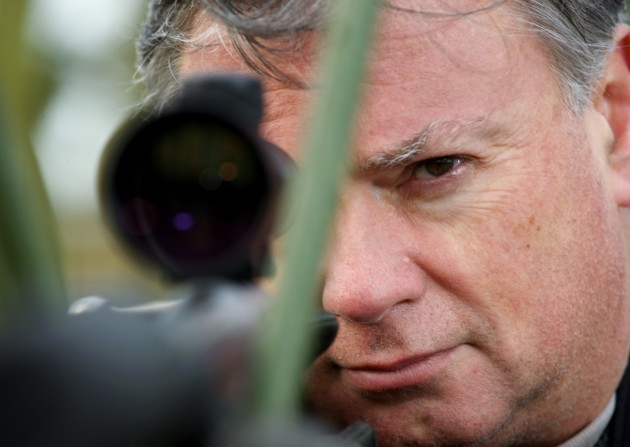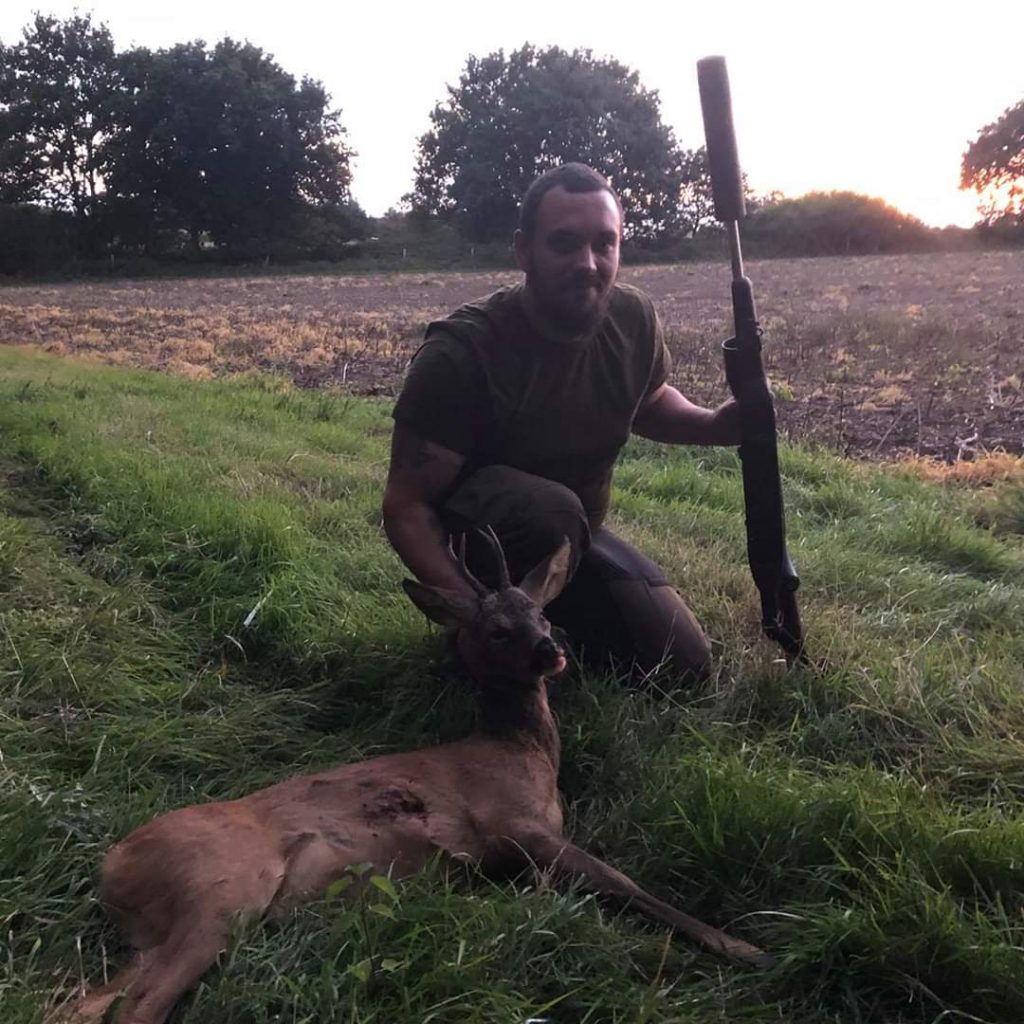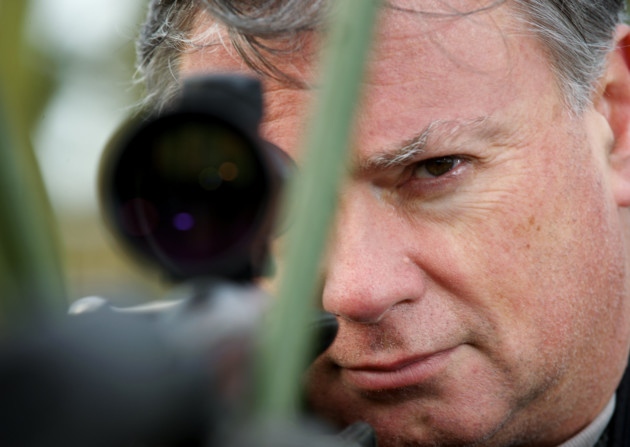
All species of deer are prolific breeders, and numbers need to be kept in check through careful management of deer populations. Damage done to farmland can become a problem to the economy, and it’s often necessary to cull some deer in order to protect valuable crops. The problem isn’t confined to the fact that deer are eating crops, but also to the damage done by large herds of deer – red and fallow in particular – trampling over crops and saplings.
Growth in numbers brings with it an increase in disease and starvation. In order to protect the six species of deer in the UK, and for the welfare of individual animals, population control is essential.
BASC deerstalking Code of Practice
The Deerstalking Code of Practice, written and published by the British Association for Shooting and Conservation (BASC), is based on a few golden rules:
- Always show respect for the countryside, consideration for others, and due regard to health and safety.
- Always ensure that there’s a solid backstop behind the deer before taking the shot and that you have an uninterrupted view of the foreground.
- Always remember that your quarry has a strong emotive appeal to many people who have little knowledge of deer management. They will judge deer management by your behaviour.
- Ignorance of the law is no excuse. If in doubt, always ask.

The Code of Practice emphasises the deerstalker’s responsibility and his/her obligation to be familiar with, and to adhere to, the Code of Practice. Anybody who shoots deer must be compliant with UK firearms law, must be a competent shot, and must be familiar with firearms safety procedures. A deerstalker must also be able to recognise each species of deer and distinguish between the sexes – although the Chinese water deer is an exception, as the bucks and does look so much alike.
When can you shoot deer?

All deer in the UK are protected by the Deer Act 1991. In addition to statutory closed seasons for each species (with an exception of muntjac), the Act also prohibits the shooting of deer at night (one hour after sunset to one hour before sunrise).
Below is a summary of shooting seasons for deer in the UK:
Red deer
| STAG | HIND | |
| England & Wales | 1 Aug – 30 Apr | 1 Nov – 31 Mar |
| Scotland | 1 Jul – 20 Oct | 21 Oct – 15 Feb |
| Northern Ireland | 1 Aug – 30 Apr | 1 Nov – 31 Mar |
Red/sika deer
| STAG | HIND | |
| England & Wales | 1 Aug – 30 Apr | 1 Nov – 31 Mar |
| Scotland | 1 Jul – 20 Oct | 21 Oct – 15 Feb |
| Northern Ireland | 1 Aug – 30 Apr | 1 Nov – 31 Mar |
Fallow deer
| BUCK | DOE | |
| England & Wales | 1 Aug – 30 Apr | 1 Nov – 31 Mar |
| Scotland | 1 Aug – 30 Apr | 21 Oct – 15 Feb |
| Northern Ireland | 1 Aug – 30 Apr | 1 Nov – 31 Mar |
Sika deer
| STAG | HIND | |
| England & Wales | 1 Aug – 30 Apr | 1 Nov – 31 Mar |
| Scotland | 1 Jul – 20 Oct | 21 Oct – 15 Feb |
| Northern Ireland | 1 Aug – 30 Apr | 1 Nov – 31 Mar |
Roe deer
| BUCK | DOE | |
| England & Wales | 1 Apr – 31 Oct | 1 Nov – 31 Mar |
| Scotland | 1 Apr – 20 Oct | 21 Oct – 21 Mar |
| Northern Ireland | No roe deer | No roe deer |
Chinese water deer
| BUCK | DOE | |
| England & Wales | 1 Nov – 31 Mar | 1 Nov – 31 Mar |
| Scotland | No Chinese water deer | No Chinese water deer |
| Northern Ireland | No Chinese water deer | No Chinese water deer |
Reeve’s muntjac deer
| BUCK | DOE | |
| England & Wales | 1 Jan – 31 Dec | 1 Jan – 31 Dec |
| Scotland | No muntjac | No muntjac |
| Northern Ireland | No muntjac | No muntjac |
In exceptional circumstances, a special licence might be granted by Natural England, giving permission to shoot deer outside of restricted times. In these unusual circumstances, the temporary exemption (licence A16) will specify the species and sex of the targeted quarry, the location, and the period covered by the licence.

Who can shoot deer?
In order to shoot deer in the UK, you must be either the owner of the land where deer will be shot, or an individual who has express permission from the landowner. You must also hold a valid firearms licence (FAC) for the correct calibre of rifle.
In addition to these legal requirements, it’s advisable to have adequate knowledge of deer, firearms, and deerstalking protocol.

Many deerstalkers have learnt from others, slowly gaining experience and knowledge from stalking with family or friends. However, this organic brand of learning isn’t available to everyone. DSC1 (Deerstalking Certificate 1) is an introductory course for deerstalkers and land managers, regulated and certified by a not-for-profit company called Deer Management Qualifications.
These are a few of the organisations that provide DSC1 training:
| Duration | Price | |
| British Association for Shooting and Conservation | 4 days | £290 |
| British Deer Society | 3 days | £295 |
| National Gamekeepers’ Organisation | 4 days | £290 |
What can you use to shoot deer?
In order to ensure a humane, one-shot kill, there are strict rules governing the power level of a stalker’s gun.
Red deer
| min. bullet weight | min. calibre | min. muzzle energy | min. muzzle velocity | |
| England & Wales | 0.240 | 1,700 ft/lb | ||
| Scotland | 100 gr | 1,750 ft/lb | 2,450 fps | |
| N Ireland | 100 gr | 0.236 | 1,700 ft/lb |
Fallow deer
| min. bullet weight | min. calibre | min. muzzle energy | min. muzzle velocity | |
| England & Wales | 0.240 | 1,700 ft/lb | ||
| Scotland | 100 gr | 1,750 ft/lb | 2,450 fps | |
| N Ireland | 100 gr | 0.236 | 1,700 ft/lb |
Sika deer
| min. bullet weight | min. calibre | min. muzzle energy | min. muzzle velocity | |
| England & Wales | 0.240 | 1,700 ft/lb | ||
| Scotland | 100 gr | 1,750 ft/lb | 2,450 fps | |
| N Ireland | 100 gr | 0.236 | 1,700 ft/lb |
Roe deer
| min. bullet weight | min. calibre | min. muzzle energy | min. muzzle velocity | |
| England & Wales | 0.240 | 1,700 ft/lb | ||
| Scotland | 50 gr | 1,000 ft/lb | 2,450 fps | |
| N Ireland |
Chinese water deer
| min. bullet weight | min. calibre | min. muzzle energy | min. muzzle velocity | |
| England & Wales | 50 gr | 0.220 | 1,000 ft/lb | |
| Scotland | ||||
| N Ireland |
Muntjac deer
| min. bullet weight | min. calibre | min. muzzle energy | min. muzzle velocity | |
| England & Wales | 50 gr | 0.220 | 1,000 ft/lb | |
| Scotland | ||||
| N Ireland |
Field Dressing
Preparation
After shooting a deer, the first thing to be done is to check that the animal is dead. This can be done by touching an eye with your shooting stick.

The carcass should be inspected both externally and internally for signs of disease. There are certain notifiable diseases, such as bovine tuberculosis and anthrax, which must be reported to the Animal and Plant Health Agency (APHA). Reporting a notifiable disease is a legal obligation.
It’s important to gralloch the carcass immediately (within 10 to 15 minutes) to ensure rapid cooling, which is particularly vital in warm weather. Lowering the temperature of the carcass prevents growth of bacteria and helps to maintain the quality of the meat. Another benefit of gralloching in situ is that the carcass will be less of a burden to carry away.

Many deerstalkers believe that the carcass should be bled before removing organs and limbs. The quickest way to release the blood is to insert a knife into the clavicle and cut the arteries above the breastbone. Suspending the carcass from a tree branch, or laying it head-downward on a slope, will allow gravity to do much of the bleeding.
Others, however, work on the principle that blood will be removed from the carcass anyway, when the organs are removed.
Method
With the deer hanging up, or lying on a slope:
- Make a long cut from the genitals to the epiglottis.
- Cut through the breastbone with a bone saw.
- Remove all parts of the digestive system.
- Remove the organs. (You may wish to keep kidneys, heart, or liver for consumption.)
- Take off the lower legs. Cut through the tendons and muscles around the joints and break off the limbs.
- Remove the head by cutting through the atlas joint at the base of the neck.
- Examine the entrails for signs of disease, then bury the entrails and limbs. If you have no use for the head, bury that too. Although there are usually hungry animals around to eat up these remains, it’s not good etiquette to leave entrails lying around.
Now the carcass must be transferred to a cool environment (under 8°).
Butchering the deer
Collagen – the most abundant protein in a mammal’s body – will make the meat tough. To allow naturally occurring enzymes in the body to break down the muscle collagen, a deer carcass should be stored at a low temperature (2-8° C) for a few days before butchering. This process is called aging. The older the deer, the higher level of collagen will be in the meat, so the carcass of an older animal will need to be aged for longer, as the meat will be tougher.
When the carcass has been aged for a few days, use a sharp knife to cut away the hide.
With the carcass lying on a stainless-steel table, divide the carcass: shoulders, neck, shanks (upper leg), loin (back strap), flanks (waist area), and haunches (buttocks). To prevent lead contamination, discard any meat within 15cm of a bullet wound.
All species of deer in the UK feature in the Who’s Who of hosts for ticks, which are carriers of the bacteria that cause Lyme disease. Because deer cannot contract or carry Lyme disease, there’s no danger of the meat being infected with the disease. Whilst handling carcasses, however, stalkers should be aware of the risk associated with ticks.
Who can sell venison?
In order to sell venison legally, you must have a Game Meat Hygiene qualification, and you need to register as a food business with your local council.
One-day Game Meat Hygiene courses, including an exam, are available from The National Gamekeepers’ Organisation (£140) and UK Deer Management (£130); you can sign up online. Once you have this qualification, you can register your food business. Visit your local council website, go to Applications, and select Register a Food Business.
In Northern Ireland, it’s illegal to sell venison to anyone other than a licensed game dealer. In Scotland, the meat can only be sold to a licenced venison dealer. The law in England and Wales is a lot more relaxed; so long as the vendor is licensed to sell the meat, there’s no restriction on where it can be sold.
David Ward, Deerstalker

Detective Inspector David Ward retired from Norfolk Police after 30 years of service. As a relatively young man (no, don’t laugh), David was looking to begin a new career, and he recognised an unfilled niche in the market. Trading as Norfolk Deer Management, which is a registered food business, David is an established and well-qualified deerstalker.
What can you do with venison?
David Ward has been deerstalking for many years, and his venison can be sampled in numerous pubs and restaurants in Norfolk. This lovely, versatile game meat has a rich taste and the added environmental benefit of low food miles. David’s fantastic venison burgers are a great favourite at the Buckinghamshire Arms, in Blickling.
I asked for the recipe, of course, but David’s lips were sealed!
However, David did share with me one of his own favourite recipes. This is a lovely way to enjoy venison liver:
Method:
- Cut the venison liver into strips and coat in plain flour.
- Fry the pieces of liver in butter.
- Soften some onions in butter over a low heat and add to the liver.
- Add stock and chilli flakes.
- Simmer for approximately 20 minutes.
Check out some more of David’s delicious venison recipes.
Acknowledgements and useful links

Thanks to James Hancock (Pellpax General Manager) and David Ward (Norfolk Deer Management) for talking to me at length on the subject of deerstalking.
BASC Deerstalking Code of Practice

